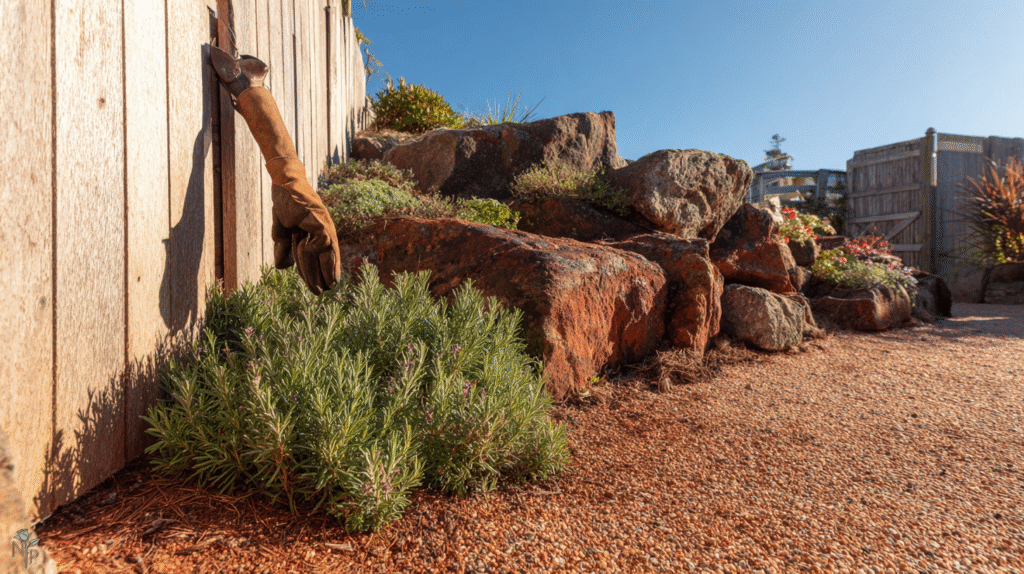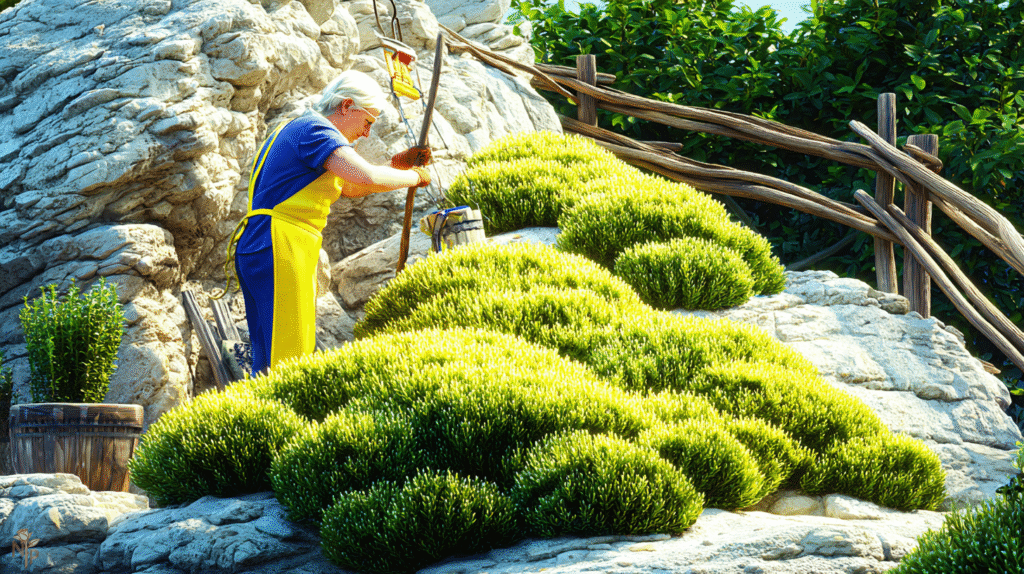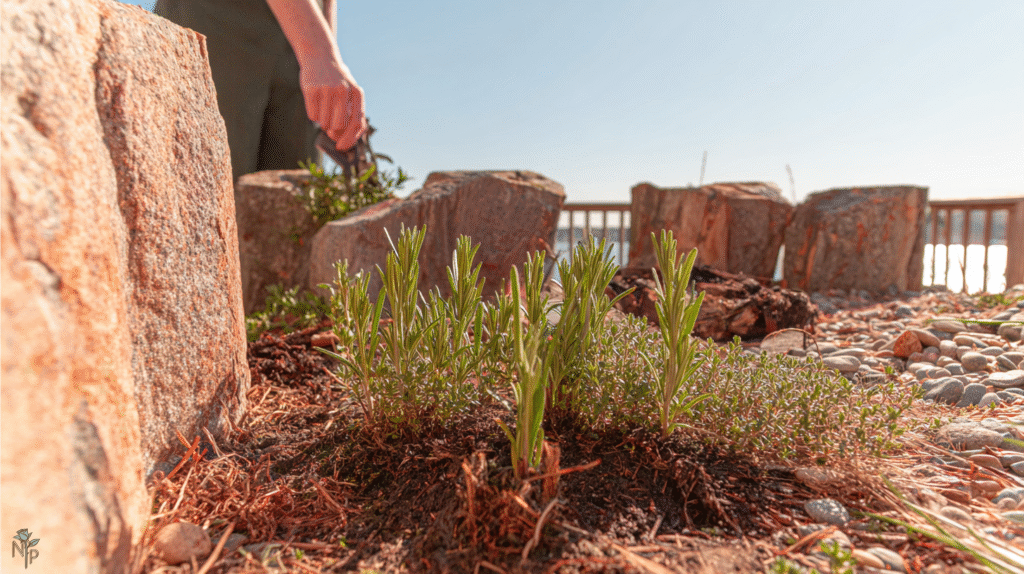My herb garden journey started with a single wilted rosemary plant from the grocery store clearance rack. Three dollars. Half dead. “I can save you,” I whispered, like some kind of delusional plant whisperer.
That rosemary died within two weeks. So did the thyme I bought to keep it company. And the second rosemary. And basically every herb I touched for an entire summer. Turns out, I was loving them to death — literally drowning these Mediterranean natives in my enthusiasm and daily watering.
Four years later, that same corner where herbs went to die is now my pride and joy. Rosemary bushes so big I give cuttings to everyone. Thyme carpeting the edges like it owns the place. The secret? I finally stopped treating Mediterranean herbs like needy houseplants and started treating them like the tough, drought-loving survivors they actually are.
Why Start with Rosemary and Thyme?
After killing approximately $50 worth of various herbs, I learned to start with the forgiving ones. Rosemary and thyme aren’t just beginner-friendly — they’re practically beginner-proof once you understand their actual needs (hint: it’s not what you think).
Why these two rock:
- Both want the same conditions (huge for beginners)
- Actually prefer neglect over attention
- Perennial in most zones (come back every year)
- Expensive at the store, free from your garden
- Look good even when you forget they exist
- Deer and rabbits usually leave them alone
That last point saved my sanity. While rabbits demolished my basil dreams, they wouldn’t touch the rosemary and thyme. Finally, plants that survived both my care AND the local wildlife.
The Location Mistake That Killed My First Gardens
I kept planting herbs in my “best” garden spot — rich soil, afternoon shade, convenient to the hose for daily watering. This is exactly wrong for Mediterranean herbs.
What rosemary and thyme actually want:
- Full, blazing sun (6-8 hours minimum)
- Poor, gravelly soil that drains fast
- Slight slope or raised area
- Good air circulation
- Protection from harsh winter wind
My winning location: The worst part of my yard. Rocky slope. Bakes in summer sun. Soil so poor nothing else would grow there. The herbs? They think it’s paradise. That neglected, hostile corner became my most productive garden space.

Soil Prep: Less Is Actually More
This goes against every gardening instinct, but Mediterranean herbs hate rich soil. I killed my first plants with kindness — amending soil with compost, adding fertilizer, creating what I thought was “perfect” growing conditions.
What actually works:
- Native soil (even if it’s terrible)
- Added coarse sand or gravel for drainage
- Maybe a handful of compost (maximum)
- pH between 6-8 (they’re not picky)
My soil mix for containers:
- 1/3 regular potting soil
- 1/3 coarse sand
- 1/3 perlite or pumice
The first time I planted rosemary in basically gravel with some dirt mixed in, I felt like a bad gardener. That plant is now four feet wide. Turns out, hostile soil creates the essential oils that make herbs flavorful.
Starting Your Plants: Seeds vs. Transplants
Rosemary from seed: Don’t. Just don’t. Germination is spotty, growth is glacially slow, and life’s too short. I wasted an entire season trying. Buy a small plant for $4 and move on with your life.
Thyme from seed: Possible but still slow. Seeds are tiny, need light to germinate, and take forever to establish. Again, a $3 transplant saves months of waiting.
The transplant strategy that works:
- Buy in spring after last frost
- Choose plants with healthy, green growth
- Avoid rootbound plants (check drainage holes)
- Smaller plants establish better than large ones
- One of each is plenty to start
I started with one rosemary and one thyme plant. Within two years, I had more than I knew what to do with through cuttings and division.
Planting Day: The Critical First Steps
The hole: Twice as wide as the root ball, same depth. No deeper — Mediterranean herbs hate being planted too low.
The amendment rebellion: Ignore every instinct to “improve” the planting hole. No compost. No fertilizer. Maybe some gravel if your soil is heavy clay.
The water situation: Water thoroughly at planting, then basically forget they exist. This was my hardest lesson. I kept checking, fussing, watering “just in case.” Nearly killed them with kindness.
Spacing reality:
- Rosemary: 3-4 feet apart (they get HUGE)
- Thyme: 12-18 inches (spreads wide but stays low)
I planted my first rosemary 18 inches from the thyme. Rookie mistake. Two years later, they were fighting for space. Learn from my cramped garden.
The Watering Schedule That Saved Everything
Repeat after me: Mediterranean herbs are not tomatoes. They don’t want consistent moisture. They want drought with occasional relief.
Year one establishment:
- Week 1: Water at planting
- Week 2-4: Check weekly, water only if wilting
- Month 2+: Water only during extreme drought
Year two and beyond:
- Spring: Rain handles it
- Summer: Maybe monthly in extreme heat
- Fall: Rain again
- Winter: Never
I literally watered my established rosemary three times last summer. During a drought. It’s currently the size of a small car. Meanwhile, my daily-watered first attempts? Compost bin residents.
Maintenance: Where Less Is More
Pruning rosemary:
- Spring: Light shaping after last frost
- Summer: Harvest stems regularly (this is pruning)
- Never cut into old woody stems
- Can remove up to 1/3 at once
Pruning thyme:
- After flowering, shear back by half
- Keeps it compact and bushy
- Spring cleanup of winter damage
- Harvest anytime
Fertilizing: Don’t. I mean it. Maybe a light compost mulch in spring if you must do something, but unfertilized herbs have stronger flavor.
Winter Survival Strategies
Depending on your zone, winter preparation varies:
Zones 7-10: Do nothing. Maybe mulch around young plants the first winter.
Zones 5-6 (my zone):
- Choose hardy varieties (‘Arp’ rosemary, English thyme)
- Mulch after ground freezes
- Protect from drying winds
- Accept some dieback
Zones 4 and colder: Grow in pots and bring inside, or treat as annuals.
I lost a beautiful rosemary to a polar vortex before learning about variety selection. Now my ‘Arp’ rosemary laughs at winter.

Harvesting: The Fun Part
Rosemary:
- Cut stems 4-6 inches long
- Never take more than 1/3 at once
- Morning harvest has most oils
- Flowers are edible too
Thyme:
- Cut stems just above leaf nodes
- Can harvest more aggressively
- Best flavor right before flowering
- Dry easily by hanging bundles
Fresh herbs available steps from my kitchen? Game-changer. That $3 clearance rosemary investment now saves me roughly $100/year in store-bought herbs.
Propagation: Infinite Free Plants
Rosemary cuttings:
- 4-6 inch stems in spring/early summer
- Strip lower leaves
- Stick in sandy soil
- Keep moist (only time they need regular water)
- Roots in 4-6 weeks
Thyme division:
- Dig up established clump in spring
- Pull apart into sections
- Replant immediately
- Water once, then ignore
I’ve created an entire herb border from one original plant of each. Given away dozens of plants. Started a neighborhood herb exchange. All from two initial purchases.
Common Problems I’ve Solved
Root rot (killed my first three plants): Too much water, poor drainage. Solution: gravelly soil, raised planting, strategic neglect.
Woody, unproductive rosemary: Needed regular pruning. Started harvesting frequently instead of being precious about it.
Thyme dying in center: Normal aging. Divide every 3-4 years to rejuvenate.
Winter damage: Wrong varieties for my zone. Switched to hardy cultivars.
Your First-Year Timeline
Spring: Plant after last frost, water once, mulch lightly
Early summer: Maybe water if extremely dry, start light harvesting
Midsummer: Heavier harvesting, propagate cuttings
Fall: Reduce harvesting, let plants harden for winter
Winter: Zone-appropriate protection, plan next year’s expansion

The Bottom Line
Starting an herb garden with rosemary and thyme taught me that sometimes the best garden care is no care. These Mediterranean natives don’t want your rich soil, daily attention, or fertilizer. They want sun, drainage, and to be left alone.
My former herb graveyard is now a Mediterranean oasis that provides fresh herbs year-round, requires almost zero maintenance, and looks good even in drought. Those grocery store herbs that cost $4 a package? I haven’t bought any in three years.
Start with one rosemary, one thyme. Give them the worst, sunniest spot in your yard. Water at planting, then basically ignore them. By next year, you’ll be giving away cuttings and wondering why everyone makes herb gardening sound difficult. Trust the process — and resist the urge to overcare. Your herbs will thank you by thriving. 🌿






